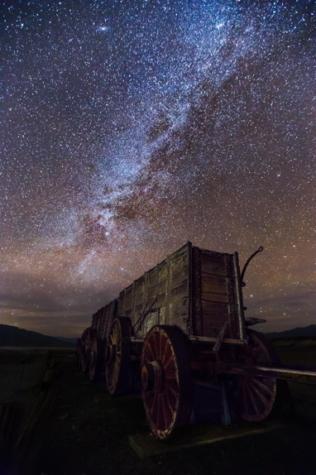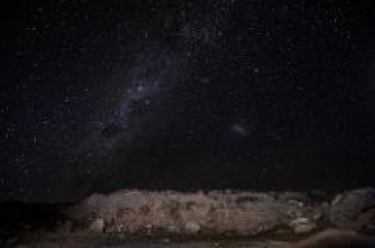Three great places for summer stargazing
June 10, 2018
Stargazing is a popular summer pastime, and depending on your travel budget, you can see some breathtaking views. These are among some of the best places in Pennsylvania, best places in the country, and best places in the world for stargazing.
Cherry Springs State Park, Pennsylvania

Located only three and a half hours away from Hershey, near Coudersport, PA, this state park is one of the eight best places in the world to go stargazing, according to the Smithsonian Magazine.
Cherry Springs is an 82 acre park in the Susquehanna State Forest, that is “famous for great views of the Milky Way, planets, and hard-to-see astronomical objects and phenomena,” according to DCNR.
This park provides hunting, picnicking, hiking, and camping as well as guided star tours and photography workshops, according to Cherry Springs State Park.
On a clear night “up to 30,000 stars fill the sky, and lucky guests may also glimpse asteroids, Venus – the evening star, Aurora Borealis (the Northern Lights), the Omega nebula, zodiacal light, meteor showers, lunar viewing, Milky Way, and other celestial bodies,” according to the park website.
Cherry Springs has two viewing parties throughout the year. This summer there will be a star party hosted by the Astronomical Society of Harrisburg on June 14-17, 2018.
This event features speakers on Friday and Saturday afternoon, as well as vendors and a swap meet. Although amateurs are welcome and encouraged to come, registration is required and there are a few rules and etiquette people should know before attending one of these events.
Death Valley National Park, Death Valley, California

If you have more money in your travel budget, Death Valley, California is one of the best places in the US for stargazing. According to CNN, this park is among the top places in the world for stargazing. One of the reasons for this is the lack of cloud cover giving viewers a better chance to see the stars.
Already claiming to be the hottest, driest, and lowest place in North America, Death Valley was recently given the title of the world’s largest dark sky park, according to USA Today.
While there is some light pollution from Las Vegas only 85 miles away, the International Dark Sky Association gave the park this designation because of it’s naturally dark “sky [that] literally begins at your feet.”
Located about 2,500 miles away from Hershey, this stargazing location would take 37 hours by car or seven and a half hours by plane plus a two hour and twenty minutes drive to reach Death Valley.
Although almost all of this park is great for stargazing, the National Park Service recommends three locations within the park for the best stargazing experience. The Harmony Borax Works offers historic buildings and a mule cart for an interesting foreground to night photography as well as little obstruction from the mountains.
The Mesquite Flat Sand Dunes has great unobstructed views of the night, but there is a highway nearby which means there is potential for light pollution. The last location is Badwater Basin, where viewing of the stars can be obstructed by mountains, but the salt flats provide for a unique foreground for photography.
Just like Cherry Springs, Death Valley has star parties and star tours which amateurs and professionals alike are encouraged to attend. Star parties that are held in Death Valley are hosted by the Las Vegas Astronomical Society. There is no current date available for the next Death Valley Star Party, but their event calendar lists a number of parties throughout the summer.
Atacama Desert, Chile

If you have the money and want to go somewhere warm, the Atacama Desert is just the stargazing destination for you. Rated number one by National Geographic, this 40,541 mile desert has many great stargazing locations.
One of the best places for amatuer and professional astronomers alike is San Pedro de Atacama in northern Chile. This town is a short drive from the Altiplano highlands or the lower flats which, are both remote areas perfect for watching the skies.
San Pedro is especially great for stargazing because while it may be an oasis town, the remoter areas in the desert nearby have optimal conditions for stargazing.
According to the Independent, this desert is known to astronomers from around the world because of its “dry, cloud-free skies, high altitude and lack of light pollution.”
Located approximately 7,000 miles away from Hershey, about 30 hours on a plane and an hour car drive will get you to San Pedro de Atacama. This stargazing experience is costly, coming in at about $1600 for even the cheapest flight.
Even with it’s high costs, this trip is great for astronomers of all levels since there are many guided star tours in the San Pedro de Atacama area. The SPACE Agency even offers nightly star tours, except during periods around a full moon, that can be done in Spanish, English, or French.
Beyond tours, the nearby ALMA observatory has a 66 telescope array built by 22 countries that anyone can apply to use for research and exploration of the cosmos. This telescope is one of the best in the world, and the observatory offers tours of their facility every Saturday and Sunday morning, although you have to preregister.







